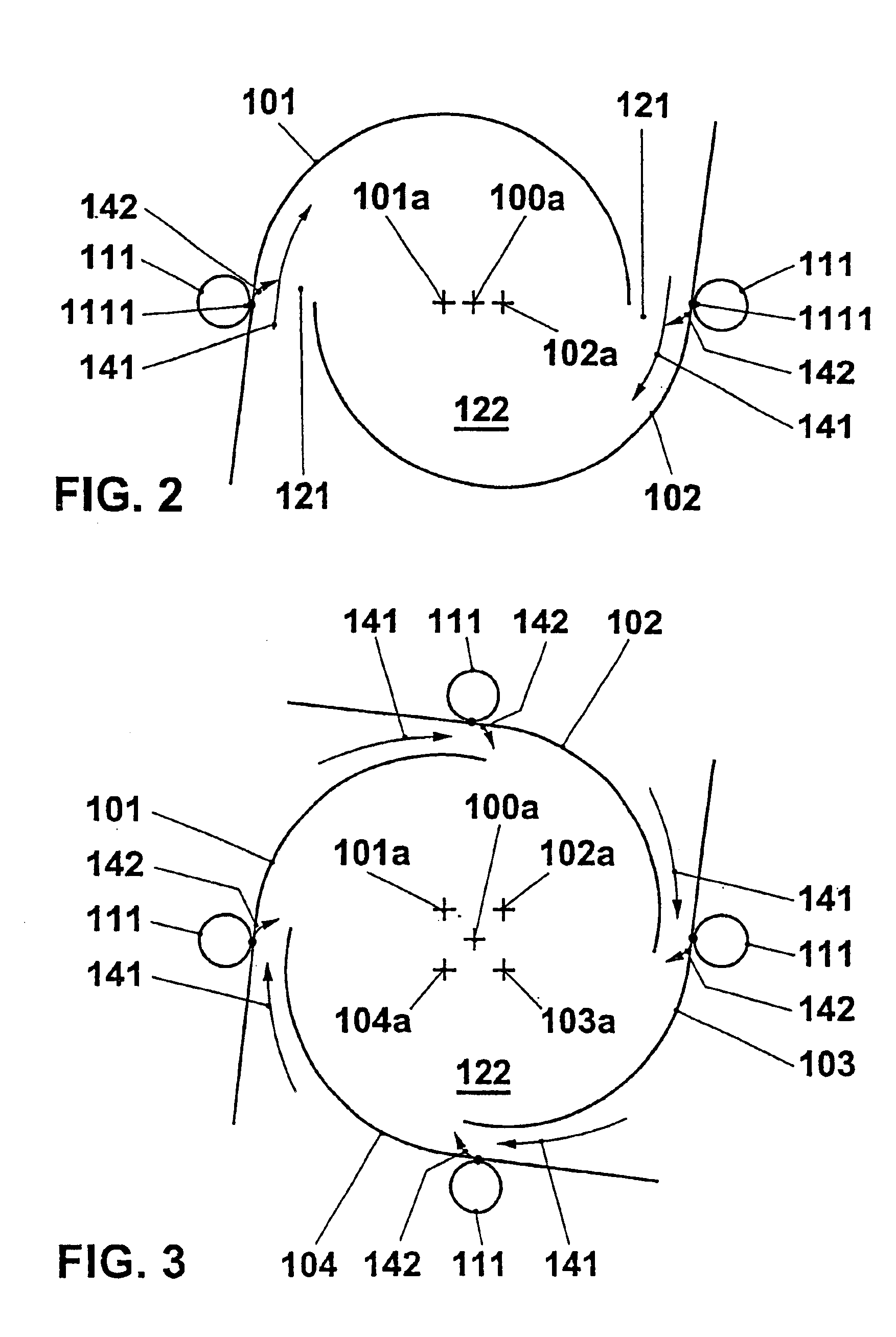Process for operation of a burner with controlled axial central air mass flow
a central air mass flow and burner technology, applied in the field of burners, can solve the problems of affecting the operation of the burner, the recirculation zone can detach from the burner outlet, and the burner can be overheated gradually, and the danger of flashback flames, etc., to achieve stable and free from pulsation, prevent acoustic resonance in the combustion chamber, and low pollution
- Summary
- Abstract
- Description
- Claims
- Application Information
AI Technical Summary
Benefits of technology
Problems solved by technology
Method used
Image
Examples
first embodiment
[0054]Burners are likewise known from WO 93 / 17279 and EP 0 945 677, and have cylindrical swirl generators with tangential combustion air inlets. In this connection it is also known to arrange a displacement member, tapering toward the burner mouth, in the interior of a cylindrical swirl generator. The favorable criterion given above for the axial throughflow cross section of the swirl generator, namely that the axial throughflow cross section increases in the axial throughflow direction, is fulfilled by means of such a swirl generator internal member. Embodiments of such burners are shown in FIGS. 9 and 10. The first embodiment in FIG. 9 shows the principle of such a burner. The mode of operation is sufficiently known and explained in principle in connection with FIG. 1; deviating from the embodiment shown in FIG. 1 of a burner according to the invention, the embodiment shown in FIG. 9 of course has a conical compression member which tapers in the combustion space 50 toward the burn...
second embodiment
[0062]A second embodiment, shown in FIG. 15, concerns the use of the burner according to the invention in gas turbine plants, for which the burner according to the invention is especially suitable. In the example in FIG. 15, a compressor 10, a turbine 30, and a generator 40 are arranged on a common shaft. The compressor 10 is equipped with an adjustable front guide vane set 11. A combustion chamber 20 is arranged in the flow path of a working medium, between the compressor 10 and the turbine 30. The combustion chamber 20 is operated with at least one burner 1 according to the invention. A regulating signal Y is passed from a control unit 3 to the adjustable device for the injection of the axial central flow. In the example shown, the control unit 3 receives a power signal XP, signals XAMB from sensors (not shown) which determine ambient conditions—temperature, moisture, pressure, etc.—of the ambient air, and also a signal XVLE which reproduces the position of the front guide vane se...
PUM
 Login to View More
Login to View More Abstract
Description
Claims
Application Information
 Login to View More
Login to View More - R&D
- Intellectual Property
- Life Sciences
- Materials
- Tech Scout
- Unparalleled Data Quality
- Higher Quality Content
- 60% Fewer Hallucinations
Browse by: Latest US Patents, China's latest patents, Technical Efficacy Thesaurus, Application Domain, Technology Topic, Popular Technical Reports.
© 2025 PatSnap. All rights reserved.Legal|Privacy policy|Modern Slavery Act Transparency Statement|Sitemap|About US| Contact US: help@patsnap.com



